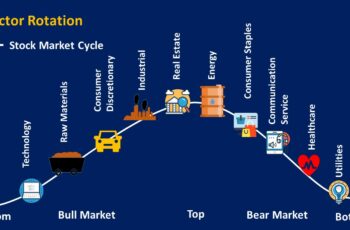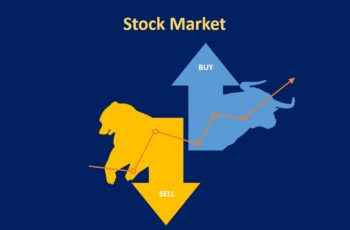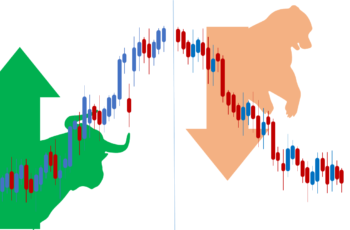IPO stands for Initial Public Offering. It is the first time a private company sells shares to the public on a stock exchange such as NYSE and NASDAQ in the USA and Tokyo Stock Exchange (TSE) in Japan.
After IPO, a company gets access to funds to scale up, grow, expand, and more.
From the start of a company till its IPO, a company is private. It means that the owners of the company are limited to a few people and organizations.
After the IPO, the owners can reach millions. Now every business and retail investor can participate in owning the newly public company previously owned by a small number of people or organizations.
Why Do Companies Go Public?
Private companies go public for various reasons. To illustrate understandably, I explain some of these reasons one by one.
These are common advantages that a company goes public:
1. To Grow and Expand Faster
Going public enables companies to raise funds quicker and catch opportunities.
By raising funds, a company can serve more customers, open new offices and factories or even go beyond the borders.
Every company wants to get bigger because a big company can scale easier than a small company, leading to huge profits.
2. Making Able Insiders Diversify
Insiders are employees, managers, and the CEO who own shares in a company. Diversification is crucial to protect wealth. Even great companies face challenges and the risk of losing markets. That is one the reasons why founders want to take their company public.
We all remember Yahoo and Nokia, which were among the great companies, and no one is praising them now. If the insiders do not diversify, they may lose a portion of their wealth.
3. Having Access to the Financial Market
Having access to the financial market is a great asset. A company that has access to the capital market can raise funds and catch opportunities easier than those that do not. An opportunity may arise, and the company that needs funds should be able to raise funds quickly otherwise, it will lose it.
4. To Raise Its Profile:
The media focuses on public companies more than private ones. Reports and discussions about a company on TV, and articles on news websites, act as an advertisement. For instance, a news channel is willing to cover new product launches of a public company more willingly than private companies.
Drawbacks of Going Public
Going public brings limitations to current owners. However, the advantages of going public exceed the disadvantages.
After going public, the Securities and Exchange Commission starts overseeing the company for the protection of investors. It works with the Justice Department on criminal cases if company executives do things wrong.
A public company is forced to share its financial positions and risks associated with the company every three months (quarterly). Investors call this event earnings call. In this event, a company’s representative also announces its growth rate and expected growth rate in the future and other essential factors.
If the executives do not satisfy shareholders, they may select other executives that could be founders of the company.
IPO Process
Going public is not straightforward. It takes months and goes through processes in the market by banks and by a governmental organization called Securities and Exchange Commission (SEC).
The IPO starts with visiting an investment bank and ends with being listed on a stock exchange.
1. Visiting an Investment Banks For Underwriting
Underwriting shares is the main job of the investment bank in the IPO process.
Underwriting is raising capital on behalf of a company. It may also include the purchase of unsold shares for a specific price, based on an agreement between the bank and the company that wants to raise funds.
An investment bank evaluates a company based on possible potential future performance. It also analyzes and predicts future cash flow, growth, profit, etc. All of these elements are valuable and help to predict its future.
The investment bank advises on what time and what type of share to issue and helps the company in the process of legal work.
Before underwriting shares, the bank researches and may call investment funds to guess expected outcomes.
After agreements of terms and conditions with the company, it is time to file for registration.
2. Registering with the Securities and Exchange Commission (SEC)
The Securities and Exchange Commission (SEC) in the US is a governmental entity that regulates and oversight the securities market and protects investors.
A company that wants to go public should register with the SEC.
A public should share all of its potential risks, and financial statements, such as cash flow, balance sheet, and income statements.
To protect investors in the stock market, the SEC conducts a probe to assure that all documents released by the company are correct. Additionally, the SEC does not allow founders and managers (insiders) to sell their stocks from IPO day until six months later, known as initial lock-up.
In the end, if the SEC is convinced, it will register and give Central Index Key (CIK) for identification of the company.
3. Marketing Stocks
In this step, the investment bank prepares documents about the company, business model, prospects, and financial statements to spread among potential investors. These investors are institutional investors such as hedge funds, mutual funds, and high-net-worth investors.
After marketing, the interested investors indicate their interest in how much and at what price they are willing to buy.
If too many investors subscribed to the IPO, they will get a portion of the stocks wanted to buy. On the other hand, if investors did not show interest in the IPO, the company can cancel it for later, when they can price higher.
4. Listing On a Stock Exchange
It is time to choose a stock exchange or multiple stock exchanges. For example, NASDAQ and NYSE in the united states or NSE in India.
If the company is reputable, stock exchanges are willing to list it. On the other hand, if the company is small or infamous, a stock exchange may refuse to list it.
Stock exchanges have requirements. And if the company meets requirements, it gets a ticker or symbol allowing investors to buy and sell its stocks.
5. IPO Day
On IPO day, the subscribers get their shares and can start selling to the public. For small retail investors, there is only one way to invest in the IPO, and that is if their brokers have secured it for them.
It is the time that chart of the company’s stock start.
It is a big day for founders because it is a sign of success that the media covers a lot. And they may become a celebrity overnight.
Issues with Investing In IPO
Investing in IPOs has risks.
Actually, investing is always accompanied by risks.
However, investing in IPOs contains more risks due to less information available in public about the company, management team, performance, etc.
1. Pricing
The investment bank and the company that goes public run campaigns before the IPO day.
Their marketing works because there is not enough information available to the public. They campaign like a politician who seeks a seat, such as carrying a road show. Moreover, the media pay attention to these companies that play like a campaign. All of these inflate the IPO price. Their campaigns, sometimes increase the demand so high that some interested investors do not get an IPO share.
As a result, often not always, the price is much higher than it worth.
2. Insufficient information
IPO investors should show interest in buying shares when the company is still private.
And, there is not enough information about a private company’s activities, such as what it produces, how it produces, and what is its performance trend.
When an investor does not know what a company does and who are management team members, why he should know the risks? Not knowing is a risk.
3. Business Model
New companies have highly likely a new model of doing business.
Stock investors are not proficient in everything. Especially, if a company that goes public has invented something completely new, it is very hard to guess its market, acceptance by people, competitors, etc.
Thus, investors may not know how the company does operate, generates revenue, what are prospective, and more. And not knowing is a huge risk.
How to Analyze an IPO?
The analysis is what investors are doing every day.
The two most common ways to market analysis are technical and fundamental.
Technical analysis is reading charts such as candlesticks and waves. Fundamental analysis examines a company’s performance and the economy.
Because the company just went public, it does not have any chart. So, technical analysis is not possible at the beginning.
Fundamental analysis of a new company is bound to the limited amount of data published by the company and the investment banks.
Due to mentioned limitations, a deep analysis is difficult. However, an investor who wants to invest in an IPO can consider the following factors:
1. Analysis of Indexes
Investors see indexes such as the S&P 500 and Dow Jones as representatives of the stock market.
If indexes are doing well, then the newly public company might do well too. On the other hand, if indexes are falling, the stock price after IPO may fall faster than other similar companies due to higher risk.
Of course, the economy impacts index behavior. So, understanding them helps.
2. Understanding Business Model
Understanding a company’s products, services, customers, potential growth in the future, and so forth is helpful. Analysis of a business model gives a clearer picture that may help an investor do invest in an IPO or not.
Reading documents released by the company and the investment bank can somehow help to understand its business model.
3. Knowing the Management Team
Knowing who are the executives such as the CEO, CFO, and COO helps to predict the future performance of a company.
A management team that has done similar tasks in the past, is more likely to do it again. Conversely, the inexperienced team may not be able to handle challenges.
For example, the founder of Snap Inc. was a young software engineer. He could not continue innovation. Some companies, such as Facebook and Instagram introduced another version of Snapchat’s product. I mean the disappearance of snaps on Snapchat and stories on Instagram and Facebook. Elon Musk is an example of a great CEO. He made Tesla successful by continuing innovation and introduction of new cars and succeeded even though many competitor electric car companies were founded.
Types of IPOs
There are two types of IPOs: fixed price and book-building offerings.
1. Fixed price offering
In a fixed-price offering, the company going public sets the price. The true demand is not known until the issue is closed.
2. Book-building offering
In a book-building offering, the company set a price range and, announces the number of shares available to investors, instead of a fixed price. The lowest price is called the floor price and the highest, is the cap price. Then, investors bid within the range of 20% selected by the company. Finally, the price is set by bids the company receives from the investors.
Examples of IPOs
Example #1: Alibaba Group IPO
On 19 September 2014, Alibaba went public, raising $21.8 billion on the NYSE. It was a record-breaking number until 11 December 2019, when Saudi Aramco raised $24.6 billion on the Tadawul stock exchange.
Example #2: Airbnb Inc. IPO
On 10 December 2020, Airbnb went public on the NASDAQ stock exchange, and its IPO price was $68. However, it opened at $146, a 115% hike.
Example #3: Snap Inc. IPO
On 2 March 2017, Snap Inc. went public on NYSE at $17 per share IPO price. But, its stock opened at $24, a 44% price hike.
From its IPO until today, 30 September 2022, its price had many ups and downs. However, today its stock price is fluctuating around $10 per share.
Fundamentally, Snap Inc. has not done well.
This company reported a profit of “one cent” per share, only for the last quarter of 2021. And, it is still losing money.
Example #4: Uber Technologies Inc. IPO
On 10 May 2019, Uber went public. Its IPO price was $45 per share. However, the Uber stock price opened lower.
After three months of struggles, Uber stock started falling. And as of today, 30 September 2022, its stock price is about $26.
“Uber Technologies” was losing money when it went public. And from that time on, it reported positive earnings only in two quarters, the second quarter of 2021 and the last quarter of 2021.






